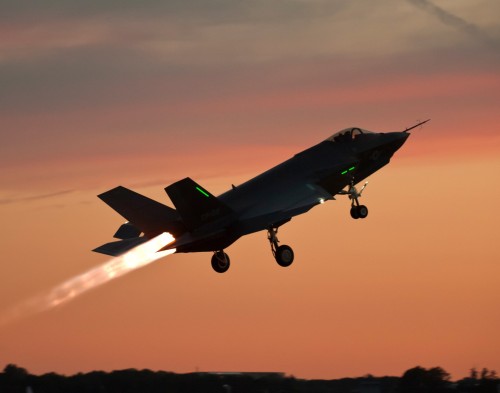The F-35 Joint Strike Fighter boasts a futuristic radar-evading fuselage and a pilot’s helmet that displays 360-degree views on the inside of its visor. It also carries another attribute that its backers hope will make it attractive to the countries they want to buy the pricey warplane: jobs.
The Pentagon needs more overseas buyers for the F-35 to enable production in numbers large enough to bring the project’s cost down. After spreading production work around to win orders, the department is offering deals to maintain and repair the planes that bring with them thousands of coveted jobs.
This week, Japan and Australia were awarded deals to provide heavy maintenance on jets based in Asia, including U.S. planes. Earlier this month, the Pentagon awarded Italy the contract to provide heavy maintenance on F-35s based in Europe, and chose Turkey to overhaul the engines, with Norway and the Netherlands earmarked to provide additional work if required.
The lure of employment has helped the F-35 retain support among U.S. lawmakers and overseas customers, despite the troubled history of delays and cost overruns in the world’s costliest military program.
The lure of employment has helped the F-35 retain support among U.S. lawmakers and overseas customers, despite the troubled history of delays and cost overruns in the world’s costliest military program.
While the F-35’s main contractors are U.S. companies Lockheed Martin Corp. and the Pratt & Whitney unit of United Technologies Corp., around 30% of the jet’s value is being produced overseas by hundreds of suppliers. The wings alone are being built in three places: Lockheed’s facility in Fort Worth, Texas, and in local factories run by a unit of Italy’s Finmeccanica SpA and Israel Aerospace Industries Ltd.
 |
| CLICK CHART to ENLARGE |
“It’s as much an industrial policy as a fighter,” said Richard Aboulafia, vice president at Teal Group, an aerospace consultancy.
Financial terms of the maintenance contracts weren’t disclosed. But given the F-35 program’s expected 50-year lifespan, they could ultimately be worth billions of dollars and support jobs for many years. Buying an F-35 only accounts for a quarter of its lifetime cost. Fuel, pilots, training, maintenance and repair account for 75%, a bill the Pentagon estimates will eventually total around $1 trillion for the fleet of more than 2,400 jets it is expected to buy.Read the rest of the story HERE.
If you like what you see, please "Like" us on Facebook either here or here. Please follow us on Twitter here.





No comments:
Post a Comment